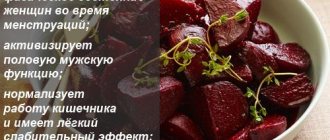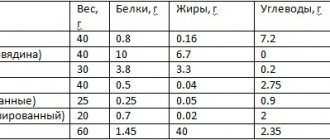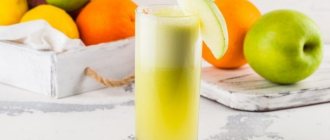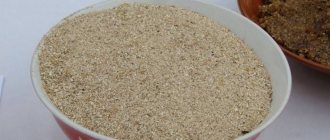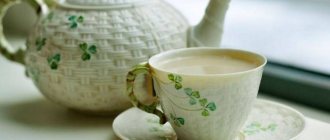The versatility of the product is an advantage among chefs and ordinary housewives. The extravagance of Japanese cuisine has conquered more than one continent, precisely thanks to various, not quite ordinary ingredients. Chuka algae, also known as hiyashi wakame, are especially popular among the residents of the Rising Sun. When they are added to various recipes, you can get a real culinary masterpiece.
Do you eat seaweed?
- Yes 89%, 617 votes
617 votes 89%617 votes - 89% of all votes
- No 11%, 77 votes
77 votes 11%
77 votes - 11% of all votes
Total votes: 694
24.09.2019
- Yes 89%, 617 votes
617 votes 89%617 votes - 89% of all votes
- No 11%, 77 votes
77 votes 11%
77 votes - 11% of all votes
Total votes: 694
24.09.2019
×
You or from your IP have already voted.
Chuka algae, what is it?
Wakame algae is associated with Japan, but the name "chuka" means "Chinese" in Japanese. It was from the Celestial Empire that they were initially imported to Japan in large quantities.
Thanks to their neutral taste and subtle, subtle smell of the sea, they are added to salads, rolls, noodles and much more. This is not surprising, because the Japanese are rightfully considered long-livers due to their diet and variety of dishes rich in various nutrients.
Foreigners often confuse wakame with seaweed - kelp due to their external similarity. However, both products have distinctive features in their composition and calorie content. Chukas have a more delicate texture and a rich iodine smell. You can see how they look in the photo.
Description
Chuka salad is a product consisting primarily of wakame seaweed. This is a wild plant found mainly on steep cliffs along the sea coasts of China, Japan and Russia. It is not difficult to mine them, since they do not go to great depths. These algae were brought to our country by the Chinese. At first they were exported in dried form, then they began to freeze.
It is in a frozen state that you can find this exotic salad on store shelves. With such processing, the beneficial substances in the composition are completely preserved.
The finished product must meet certain indicators:
- rich green color of algae;
- absence of white flakes and pieces of ice in the packaging;
- neutral taste, unlike seaweed;
- delicate and soft structure.
It is recommended to buy salad in a transparent container so that you can visually assess the quality.
Despite the simplicity of its composition, Chuka salad has a nuance - the seaweed is seasoned with a special marinade, the basis of which is soy and nut sauce. The product is not marinated in advance, but immediately before use. This gives the algae a refined aroma and taste. The recipe for the dish is simple, so you can prepare it yourself at home.
Recipe
To prepare Chuka salad you will need the following food set:
- pickled or dry seaweed - 250 g;
- soy sauce - 50-55 ml;
- water - 50 ml;
- sesame seeds - 300 g;
- freshly squeezed lemon juice - 1 tsp;
- sesame oil - 5-8 ml.
For the nut sauce:
- peanuts or cashews - 40-50 g;
- water - 3-4 tbsp. l. ;
- sesame oil - 3-5 ml;
- mustard - 0.5 tsp;
- sesame - 200 g;
- lemon juice - 2-3 tsp;
- granulated sugar - 8-9 g;
- vegetable oil - 2-2.5 tbsp. l.;
- classic soy sauce - 3 tbsp. l.
Step-by-step preparation:
- Fry sesame seeds in a dry frying pan until golden brown, stirring constantly.
- Place the wakame in a salad bowl, sprinkle with sesame seeds and season with the remaining liquid ingredients. The dry product must first be soaked in water for 10 minutes to allow it to swell.
- Mix thoroughly.
- Proceed to preparing the sauce: roast the nuts and sesame seeds in a hot frying pan.
- Then grind in a blender until smooth.
- Add sugar, mustard, lemon juice, oil and beat again.
- Pour the prepared dressing into a gravy boat and serve with the salad.
Beneficial features
The beneficial properties of chuka algae are due to the presence of many microelements. Their iodine content is especially pronounced. Regular consumption of wakame fully satisfies the daily replenishment of nutrients in the body for dieters and vegetarians. They:
- Improves the functioning of the heart and cardiovascular system;
- Helps strengthen blood vessels;
- Remove toxins and waste from the body, cleansing the liver and intestines;
- Normalize the functioning of the gastrointestinal tract;
- Effectively cope with constipation and diarrhea;
- Reduces bad cholesterol levels;
- Optimize thyroid function;
- Helps improve vision and hearing;
- They should be consumed as food for psoriasis;
- Due to their rich chemical composition, they promote skin rejuvenation.
An additional benefit of the product is to improve brain function.
The benefits of algae can be highlighted separately for men in the form of increased production of testosterone and sperm. In women, they help improve the functioning of the reproductive system and tone the muscles. Do you eat seaweed?
- Yes 89%, 617 votes
617 votes 89%617 votes - 89% of all votes
- No 11%, 77 votes
77 votes 11%
77 votes - 11% of all votes
Total votes: 694
24.09.2019
- Yes 89%, 617 votes
617 votes 89%617 votes - 89% of all votes
- No 11%, 77 votes
77 votes 11%
77 votes - 11% of all votes
Total votes: 694
24.09.2019
×
You or from your IP have already voted.
The use of wakame is especially important for people with an increased risk of developing cancer. The girls appreciated the beneficial cosmetic effects of algae. They are used to make masks for the face and hair. The latter, after such care, become thicker and shinier. The composition of the product helps restore sleep, eliminates neuroses and other worries.
Information: Chuka algae is a powerful aphrodisiac that increases male and female libido.
Chuka algae is beneficial, but can cause harm. They are not recommended for use in the first and last trimesters of pregnancy. In the first trimester, cases of heartburn are common; in recent months, it can cause premature contractions.
Harm can also occur during breastfeeding. The high iodine content in the plant leads to hormonal changes in the baby and causes allergies. For the same reasons, children under 12 years of age are prohibited from consuming wakame. After crossing this milestone, this product only brings benefits.
Choosing chukka for preparing salads
You can buy seaweed in specialized stores or in the Asian food departments of regular supermarkets. It is available in two forms - dried (sold in small sealed bags) and pickled (can be sold chilled by weight or in vacuum packaging, or frozen). When purchasing seaweed, it is especially important to be sure of its quality.
Since they are farmed or harvested from the wild, it is recommended to ensure that they are not exposed to potentially harmful substances such as:
- oil residues;
- radioactive isotopes;
- wastewater;
- pesticides and herbicides;
- heavy metals.
Therefore, it is advisable to purchase a reputable brand product that has been independently lab tested to monitor potential contaminants and is certified to do so.
Chemical composition and calorie content
Full saturation of the body with all useful elements is an undeniable advantage of the product. It contains natural collagen, vegetable protein, amino acids, fiber:
- Minerals: iodine, iron, magnesium, manganese, copper, zinc, calcium, selenium, phosphorus, potassium. All these minerals strengthen the cardiovascular, digestive and respiratory systems;
- The vitamin complex consists of B vitamins (choline, thiamine), A, C, D, K, E. They improve the condition of the skin, hair, nail plates and have a beneficial effect on the body;
- Thanks to amino acids, regular consumption of wakame leads to weight loss without loss of muscle tone. They are optimal for restoring the body after physical and psychological stress;
- Antioxidants remove free radicals, preventing the development of cancer cells. Reduce the risk of strokes, atherosclerosis, rheumatoid arthritis, diabetes;
- Plant protein is necessary to increase the elasticity of the skin, muscle tissue, and strengthen bones;
- Fiber acts as a cleansing “brush”, removing toxins and waste from the body;
- Fatty acids (Omega-3) fight signs of aging, remove “bad” cholesterol and promote active brain activity.
In addition to its beneficial properties, chuka seaweed is a low-calorie product, which is important for women on a diet. 100 grams of product contains from 60 to 63 kilocalories. Depending on the subspecies, they contain about 70 percent carbohydrates, 28 percent bacon and only 5 percent fat.
The nutritional value
The main benefits of wakame and snacks based on them are due to the rich chemical composition and low calorie content of chuka. These seafood contain a large amount of vitamins and minerals, as well as healthy fiber, easily digestible plant proteins and amino acids, collagen, Omega-3 polyunsaturated fatty acids and many other valuable substances.
Proteins fats carbohydrates
Hiashi wakame, like all foods of plant origin, is a carbohydrate product, and all carbohydrates in them are classified as complex and, accordingly, very healthy. In addition, they contain proteins and healthy fats.
In general, fresh chukka with a caloric value of 45 kcal per 100 grams contains:
- proteins – 3 g;
- fat – 0.6 g;
- carbohydrates – 8.6 g.
In the classic salad “Chuka” with a calorie content of 90 kcal/100 g:
- proteins – 1 g;
- fat – 4 g;
- carbohydrates – 12 g.
In homemade “Chuka” with a calorie content of 64 kcal/100 g:
- proteins – 7 g;
- fat - 0.5 g;
- carbohydrates - 12 g.
In the nut salad “Chuka” with a calorie content of 188 kcal/100 g:
- proteins - 5 g;
- fat – 16 g;
- carbohydrates - 13 g.
The big advantage of Chuka salads is the variety of cooking recipes, thanks to which you can choose or independently adjust the calorie content of such a snack. If this parameter needs to be reduced, then you should choose options with a minimum amount of fatty components (nuts, seeds, vegetable oil, store-bought sauces). In this case, you can get “Chuka” with a calorie content of no more than 64 kcal/100 g, whereas if all the above ingredients are included in the composition, this figure can increase 3 times - almost up to 190 kcal per 100 grams.
Macro- and microelements
At its core, seafood is the richest natural mineral complex. Each of them contains large quantities of microelements vital for humans, including:
- zinc - improves brain function and increases mental abilities, normalizes the activity of the reproductive system and the synthesis of sex hormones, strengthens vision, controls the production of cortisol, promotes proper formation of bone tissue and strengthening teeth, participates in a number of enzymatic reactions;
- copper - rejuvenates the epithelium, strengthens connective tissue and bones, improves endocrine function, restores the elasticity of vascular walls, participates in the formation of hemoglobin, is part of melanin, and activates redox processes;
- manganese - helps normalize digestion, improves insulin and fat metabolism, accelerates cell development, improves hematopoiesis, protects cells from damage and death, neutralizes the attacks of free radicals, reduces the likelihood of the formation of atherosclerotic plaques and blockage of blood vessels;
- iron is one of the main participants in the process of hematopoiesis, normalizes the production of myoglobin and a number of enzymes, promotes the transfer of oxygen by red blood cells, improves oxidative reactions at the cellular level, reduces cravings for sweets, and helps reduce the daily calorie intake;
- iodine - ensures the correct physiology of the thyroid gland, is part of its hormones, improves metabolism, normalizes the growth and development of the body, regulates body temperature and energy exchange, improves electrolyte-water balance, accelerates the metabolism of vitamins;
- Selenium - increases the antioxidant activity of vitamins, provides anti-carcinogenic protection, supports sexual function, normalizes the metabolism of fatty acids, improves the condition of the endocrine glands, protects against aging, is part of enzymes, and has a beneficial effect on the skin.
In addition, the algal composition contains in high concentrations almost all the macroelements that a person should receive from food. Each of them plays a vital role in the body, providing a number of useful actions:
- phosphorus - maintains the stability of the musculoskeletal system, prevents bone deformation, strengthens teeth, activates internal biochemical processes, is responsible for the formation of nerve cells, is used to transfer energy in the form of ATP, relieves irritability;
- potassium - ensures muscle work, maintains healthy heart muscles, strengthens blood vessels, creates a diuretic and choleretic effect, improves the regeneration of intracellular fluids, normalizes the functionality of soft tissues;
- magnesium - promotes proper nutrition of nervous system cells, participates in the metabolism of glucose and regulates its level in the blood, reduces the risk of developing diabetes, regulates protein production, improves muscle function, and helps increase bone strength;
- sodium - ensures proper development and growth of cells, is useful for the circulatory system, is involved in the transport of various elements into each cell, restores the correct generation of nerve signals, helps normal muscle contraction, accelerates digestion;
- Calcium is responsible for the full development of the musculoskeletal system, prevents the development of osteomalacia (adult rickets) and osteoporosis, improves metabolism, improves the cardiovascular system, helps lower blood pressure, has a positive effect on blood clotting and the formation of blood clots in areas of vascular damage.
The entire complex of these micro- and macroelements is characterized by close interaction and a synergistic relationship, thanks to which they enhance each other’s beneficial qualities. That is why the benefits of wakame are more pronounced than those of similar pharmaceutical drugs.
Vitamins
The algal composition contains a whole range of vitamins, including the most important antioxidants and immunomodulators, as well as neurostimulants, represented by a significant part of group B. All these biologically active compounds have a beneficial effect on the condition and functionality of the body, helping to improve health and improve well-being. The following vitamins are found in the greatest quantities:
- C - accelerates collagen synthesis and regeneration processes of all tissues, is considered the main anti-stress vitamin, reduces the harmful effects of any negative factors and nervous overstrain, regulates the level of “good” and “harmful” cholesterol, increases the delivery of oxygen to cells;
- A - eliminates vision problems, improves cell restoration and development, prevents heart and artery diseases, resists free radicals, has anti-carcinogenic properties, supports cholesterol levels, participates in the formation of bone and dental structure;
- beta carotene - synthesized in the body into vitamin A, protects cells from destruction by radicals, prevents cancer and cardiovascular diseases, helps maintain youth and prevent premature aging, normalizes the condition of the skin;
- E - is one of the main vitamins of beauty and youth, supports and improves the female reproductive system, prevents damage and cell death, ensures the proper functioning of the nervous system, reduces appetite and indirectly reduces the daily calorie intake;
- K − helps to absorb vitamin D and calcium, accelerates the formation of protein compounds, increases the successful functioning of internal organs, is especially useful for internal bleeding and external injuries by ensuring blood clotting in areas of tissue damage.
From the entire group B, vakama contains vitamins that have a positive effect on the nervous and digestive systems, muscle activity and hematopoietic processes. Each of them has its own beneficial effect on the body:
- B1 - normalizes the processes of nerve stimulation, activates the metabolism of proteins, carbohydrates and fats, protects cell membranes from the toxic effects of oxidation products, improves the functioning of the digestive tract, increases endurance under excessive loads;
- B2 - restores normal tissue respiration, accelerates food digestion, promotes the conversion of calories into energy, indirectly reduces calorie intake, prevents the formation of excess fat deposits, controls the level of stress hormones, regulates enzyme activity;
- B3 - strengthens and increases the elasticity of blood vessels, accelerates the conversion of fatty acids into energy, actively promotes the process of weight loss, has a beneficial effect on brain nutrition, activates metabolism and oxidative reactions, helps maintain a balanced diet and reduce its calorie content;
- B4 - prevents central nervous system disorders, works as a hepatoprotector, restores liver tissue after damage by toxins, catalyzes metabolism and the absorption of vitamins, helps the pancreas produce insulin and break down carbohydrates, stabilizes the condition in diabetes mellitus type I and II;
- B5 - participates in fat metabolism, improves the formation and regeneration of cells, prevents exhaustion and hair loss, participates in the production of red blood cells and a number of hormones, is responsible for concentration and long-term memory, promotes skin rejuvenation, relieves apathy and fatigue;
- B6 - prevents aging, prevents nervous disorders and skin problems based on them, relieves nausea, relieves night cramps, numbness and cramps of the limbs, produces a diuretic effect, regulates the concentration of sugar and cholesterol in the blood;
- B9 - supplies carbon for hematopoietic processes, normalizes the emotional state, increases the production of “happiness” hormones, has a beneficial effect on cell development, improves the functions of the cardiovascular system, and ensures the conduction of impulses between neurons.
The beneficial effect of hiyashi wakame on the human body is very great, and with regular moderate consumption, these algae can relieve various health problems and saturate the blood with essential elements. But even such a unique product has some contraindications. First of all, these are allergic reactions characteristic of all seafood. In addition, due to the increased iodine content, algae can disrupt hormonal balance, which is especially dangerous in childhood or in the presence of endocrine disorders, especially thyroid diseases.
In the absence of contraindications, dishes with the addition of chuka will help “charge” the body with energy and provide a powerful vitamin and mineral complex. In addition, they are very tasty, unusual, filling, and in most cases have low calorie content.
Selection and storage
Seaweed grows at a depth of no more than 100 meters, but for storage and subsequent transportation it is frozen or dried. Less commonly, the plant is canned or pickled. It is in this form that the product can be purchased at retail or wholesale. There are several factors to consider when purchasing:
- It is better to buy a frozen plant in transparent packaging.
- Best before date. Frozen seaweed is stored for a maximum of one year, dried - no more than two years.
- Ice should not be present in a package containing a frozen product. This factor indicates repeated freezing and thawing of the product, which does not have the best effect on its quality.
- The natural color of the product is light green, a shade of malachite (you can see it in the photo).
- Their taste is soft and delicate and does not have a rough tint, like seaweed.
- The predominant aroma is marine with a less pronounced odor of iodine.
For consumption, it is better to give preference to frozen or dried products. The latter are pre-soaked before cooking.
Chuka harm and contraindications
While listing all the advantages of algae, one cannot fail to mention their possible adverse effects on humans. It is not recommended to consume salad for people with a high iodine content in the body and thyroid diseases (possible hormonal imbalance).
Also, seaweed should not be introduced into the diet of children under twelve years of age. It is believed that some substances contained in plants can inhibit metabolic processes and contribute to water stagnation.
If a person has individual intolerance, this is another contraindication to eating salad. If an allergic reaction occurs, you should remove the product from your menu.
It should also be recalled that algae play the role of a biofilter in the ecosystem. They purify and disinfect the water in which they grow from various contaminants.
If the area where they were collected is unfavorable, the ecology is bad, and the water is stagnant, then perhaps such plants will contain a considerable amount of harmful elements, and there will be no benefit from them to the body.
If you are going to buy chuka salad, you should pay attention to the following points:
- The color of the algae should be natural and pleasant. Their color is usually golden green, or may be malachite;
- The taste of the salad is neutral (compared to seaweed), more juicy, there is no pronounced smell of iodine;
- The structure is delicate and soft. If the salad is hard, tasteless and colorless, then it is of poor quality;
- If there were large pieces of ice in the package, the algae were defrosted and then re-frozen.
To protect yourself from possible disappointments, buy chuka salad only from trusted, reputable places. Then you can get maximum benefit and taste from the product without harm to your health.
Other Applications
For weight loss
Those who want to lose weight can safely include the product in their diet . Its low calorie content along with its beneficial properties make it a worthy part of the diet menu.
Just 50-60 g of product per day will help control your appetite and lose weight faster.
The advantage of using it is that the numerous useful components in the composition will help maintain the strength and vitality of the body of a losing weight person.
Salad can be used as a low-calorie snack even in the evening - there is no harm from it, but the benefits are enormous.
In folk medicine
Traditional medicine has long used marine plants. Considering the beneficial properties of the product, it is clear why the Japanese, who regularly eat it, are long-livers.
Algae help cope with problems such as anemia, diarrhea, psoriasis, diseases of the digestive tract and thyroid gland, circulatory disorders, depression, neurosis, and chronic diseases.
Regular consumption of chuka will saturate the body with a number of valuable microelements necessary for its normal functioning. Fluoride strengthens teeth and gums and protects against caries .
Molybdenum heals connective tissue , iodine is responsible for the health of important glands, and the vitamins in the salad contribute to accelerated cell renewal.
In cosmetology
By saturating the body with vitamins and minerals, chuka algae also improves the condition of the skin, hair and nails .
Marine plant extracts are added to various creams and masks. Seaweed wraps are widely known to help get rid of excess weight and cellulite.
Chuka seaweed and a salad based on it are an excellent addition to the diet of people who care about their health and figure.
This Asian guest on our tables helps us significantly improve our quality of life.
How to choose chuka?
The degree of usefulness of algae directly depends on where they grew and were collected. All microelements and vitamins can be preserved in them only by shock freezing. If the product is defrosted during transportation, ice and snow accumulate inside the package, which reduces quality. Moreover, such seafood can harm the body. If you want to purchase healthy algae, you should pay attention to the following factors:
- Chuka collection region.
- Manufacturing company.
- Transparency of packaging.
- Shelf life.
- Amount of ice and snow in the package.
Experts note that it is permissible to contain only a small amount of ice crystals in the pack. If there are a lot of them in the package, this indicates that the product has been frozen and thawed several times. This means that it has no beneficial properties.
The color of the algae is no less important. A good product should have a dark emerald or bright green hue. Pale algae, hard in taste, with an unpleasant aftertaste are dangerous to human health. A change in the color of seafood indicates a violation of storage technology. When frozen, chuka can be stored for up to a year. Thawed seaweed should be used within a month.
Each subsequent freezing reduces the amount of beneficial properties in the product.
The use of chuk in cosmetology.
Along with the common kelp, chuka is used by beauty salons. When wrapping wakame, cellulite disappears. Algae-based masks and creams have a beneficial effect on human skin, rejuvenating and cleansing it. Pigment spots, pimples, acne quickly disappear. The skin is moisturized. Wakame extracts are especially common and are used to rejuvenate and tighten the skin and create hair masks. Dry chuk powder is used for scrubs.
Is it possible to use chuka for weight loss?
Eating chuka salad leads to a feeling of fullness with a small amount of food eaten. The body receives all the elements necessary for life.
Chuka, by accelerating metabolism and stimulating fat burning, significantly facilitates the process of losing weight. When creating dietary dishes from chuka salad, you should not use fatty and high-calorie foods.
general information
Chuka is a brown algae that grows off the coast of China, Russia and Japan. Their extraction is not difficult, since underwater plants do not live at depths below 100 meters. Juicy and crispy seaweed has a very rich light green or dark color. Chuka is characterized by a delicate neutral taste. The product is valued due to its low calorie content. They can satisfy hunger for a long time. For the first time, seaweed began to be actively used for food in Japan.
Wakame was originally considered a poor man's food. But since it became known about all the beneficial properties of the product, it can be seen on the table of all residents of Japan and China. Chuka algae is present in the daily diet of all local residents. They are used in sushi, side dishes and salads. In our country, the name chuka is assigned to such algae. They are brought to us from China. They are valued for their high content of nutrients, affordable price and low calorie content.
Cooking recipes
Chuka salad is consumed in its pure form or used to prepare various dishes . These are rolls or egg noodles. Seaweed is usually served with soy or nut sauce.
Chuka goes well with stewed vegetables and salads . Daikon, celery, and pickled cherries are often added to it.
Wakame is often used in vegetarian and dietary menus. You can eat salad with meat or fish dishes , increasing their nutritional value.
There are dozens of recipes using this seaweed. Let's look at 2 of them.
Classical
Ingredients : 400 g frozen chukka, chili pepper, a couple of tablespoons of sesame seeds, 100 g of pickled kikurage mushrooms (can be replaced with others), 20 ml of rice vinegar, two tablespoons of soy sauce, a tablespoon of sugar and sesame oil, a teaspoon of salt and starch.
Preparation : add salt to water, boil the seaweed. Place them in a colander and pour the broth into a separate container.
Dilute the starch in 100 ml of broth, heat it until it thickens, and let cool. In the resulting solution, dilute salt, sugar, oils and sauces, and a tablespoon of vinegar.
Chop the mushrooms into strips and chop the pepper into cubes. Dry the sesame seeds in a frying pan without oil. Mix everything. Can be filled with oil.
How to make miso soup with tofu and wakame:
With celery
Ingredients : 300 g of seaweed, 150 g of celery root, 30 ml of vegetable oil, teaspoon of flour, chili pepper, 20 ml of wine vinegar, 2 tablespoons of sesame seeds, salt, sugar and pepper to taste.
Preparation : Boil the seaweed in salted and acidified water. Drain the broth into a separate container.
In 100 ml of broth, dilute spices, flour, vinegar, chopped chili and vegetable oil. Heat until mixture thickens.
Chop the celery into strips. Pour in the sauce and let cool. Then remove the celery from the sauce, add sesame seeds and seaweed. You can add wine vinegar.
Simple salad with chuka and seaweed, video recipe:

